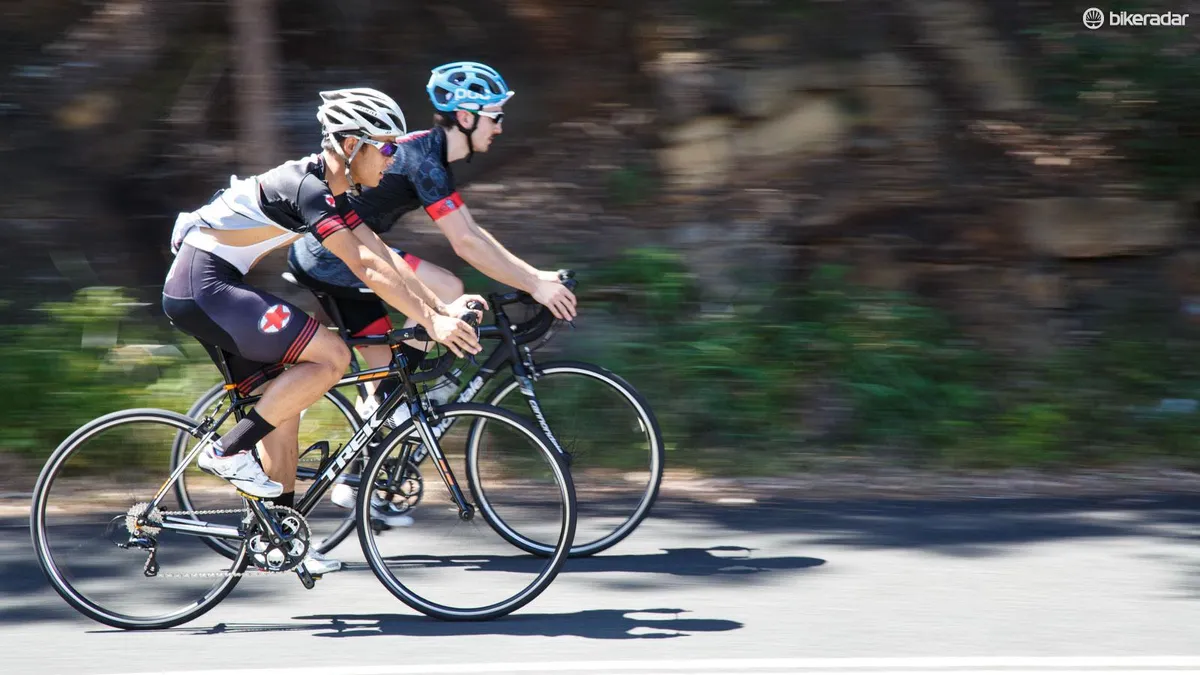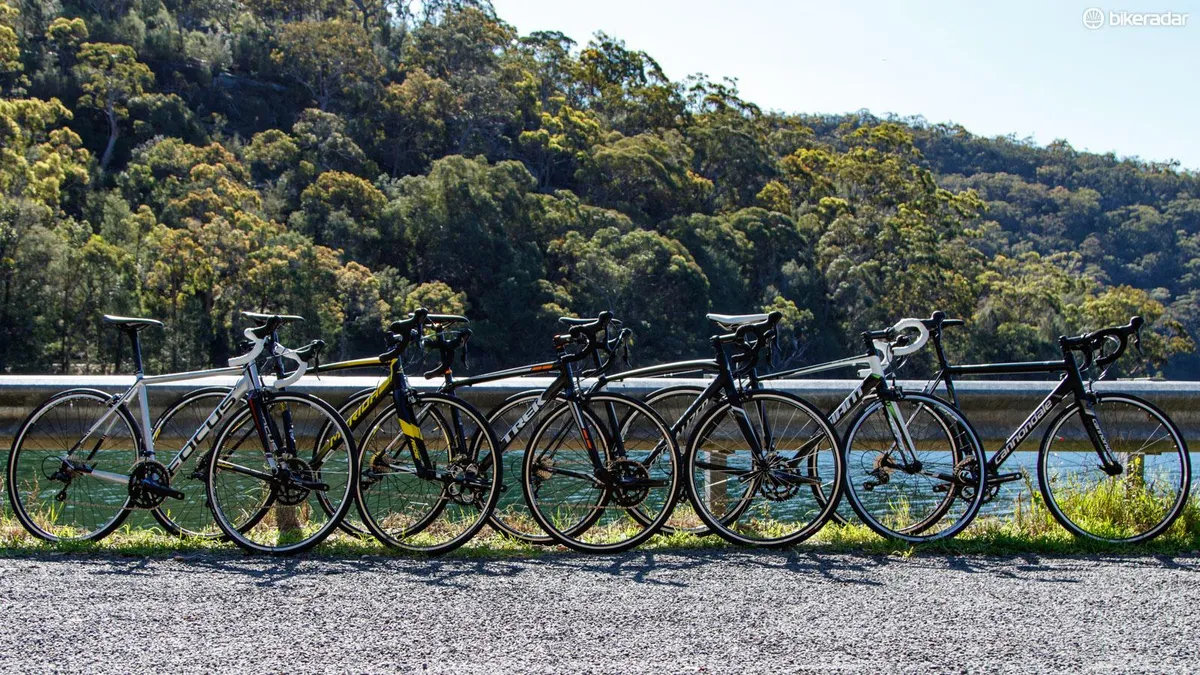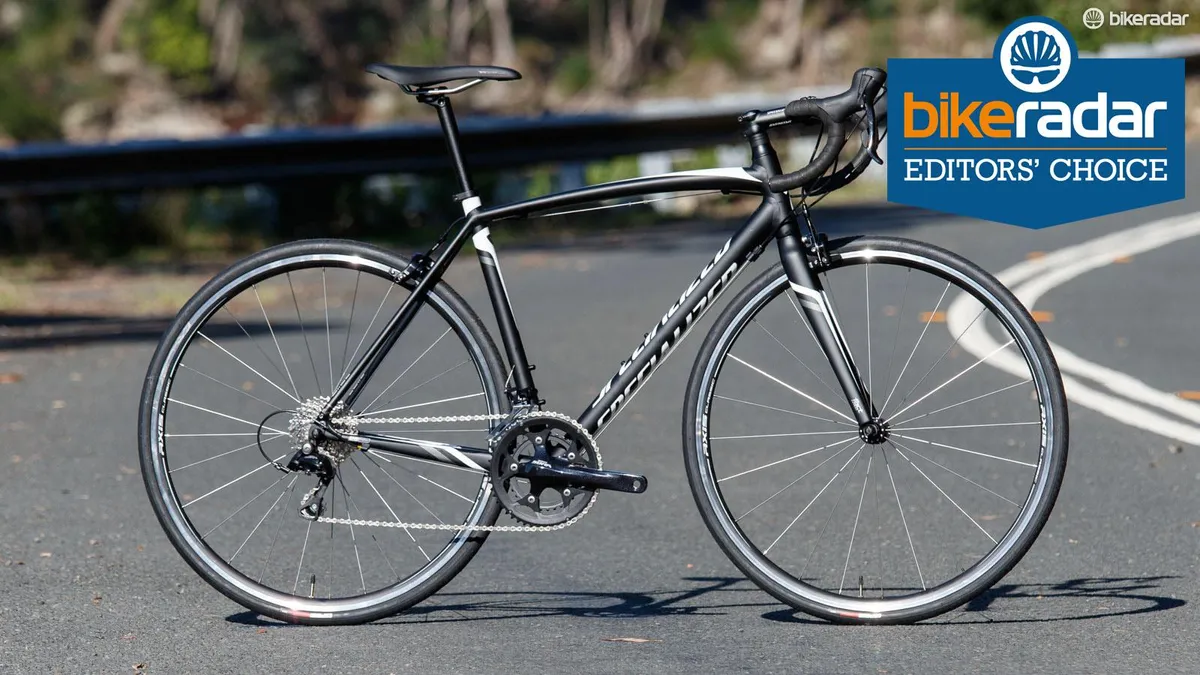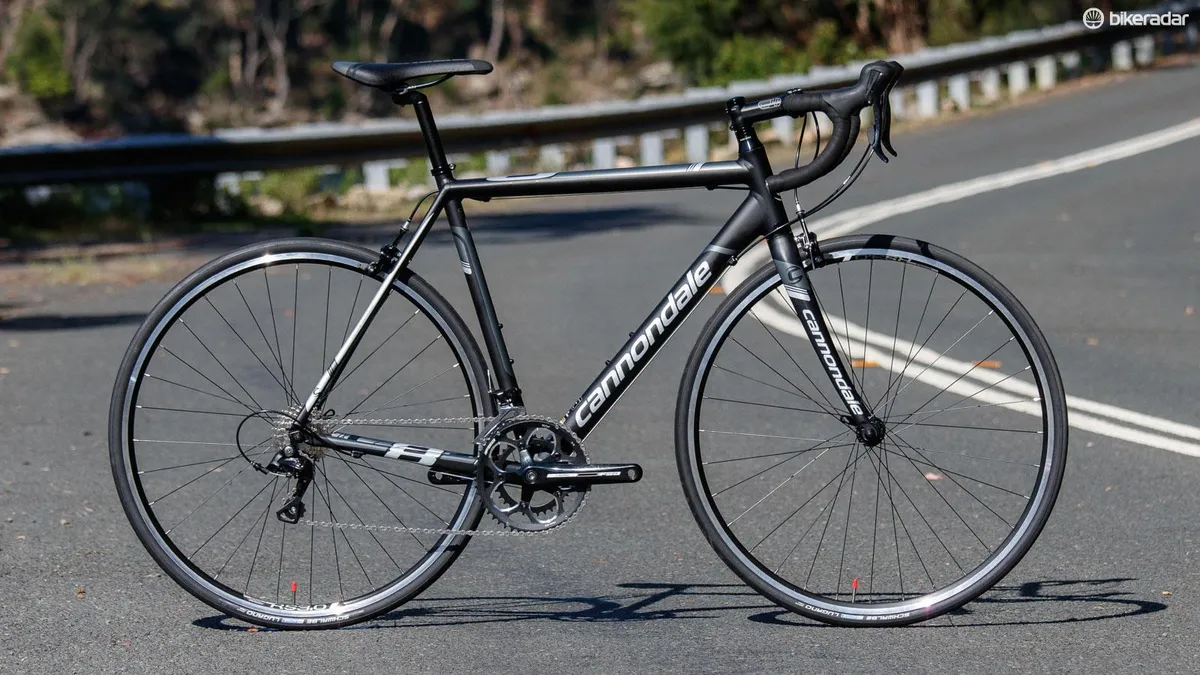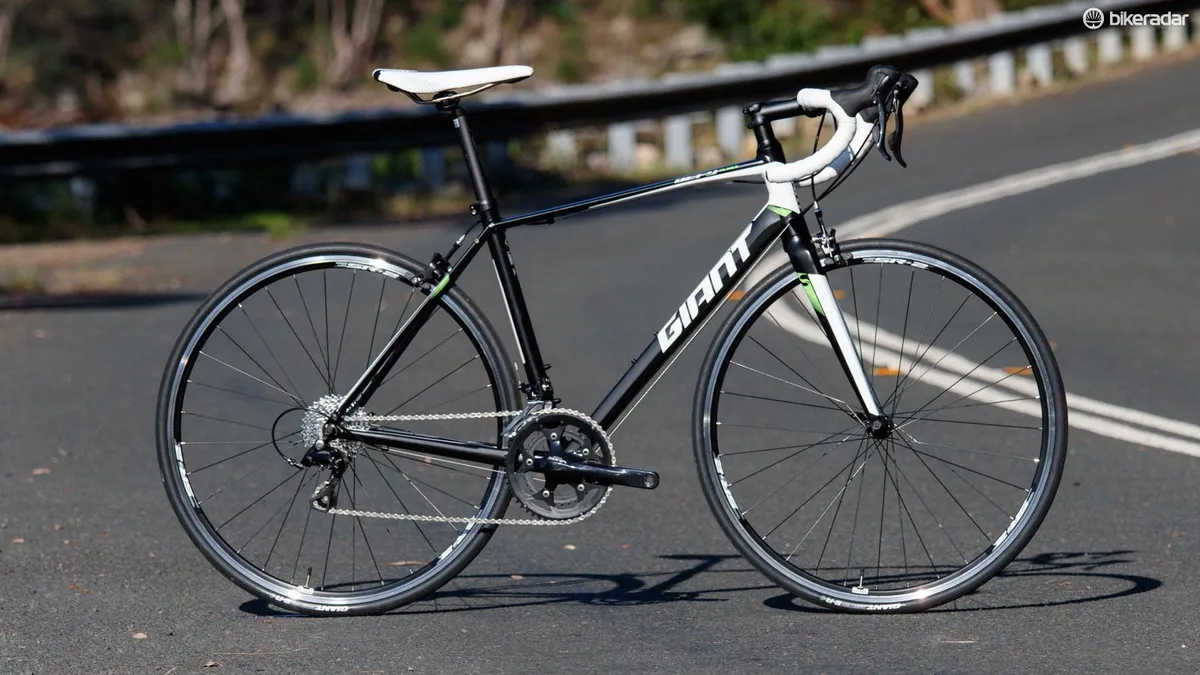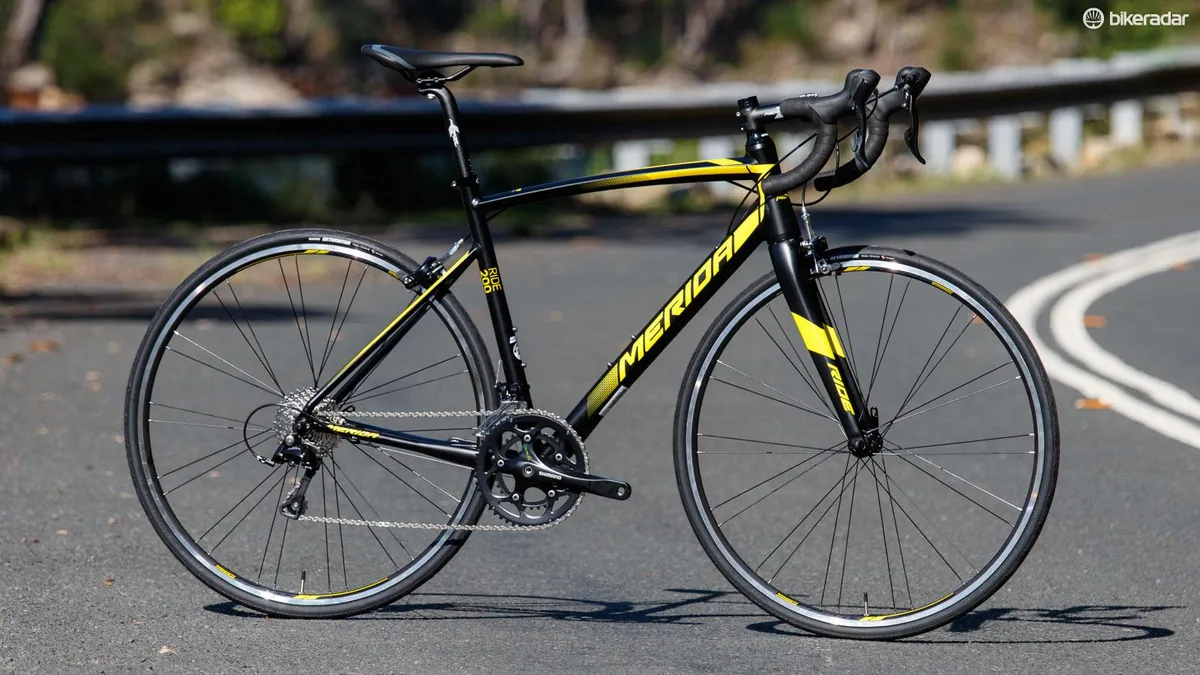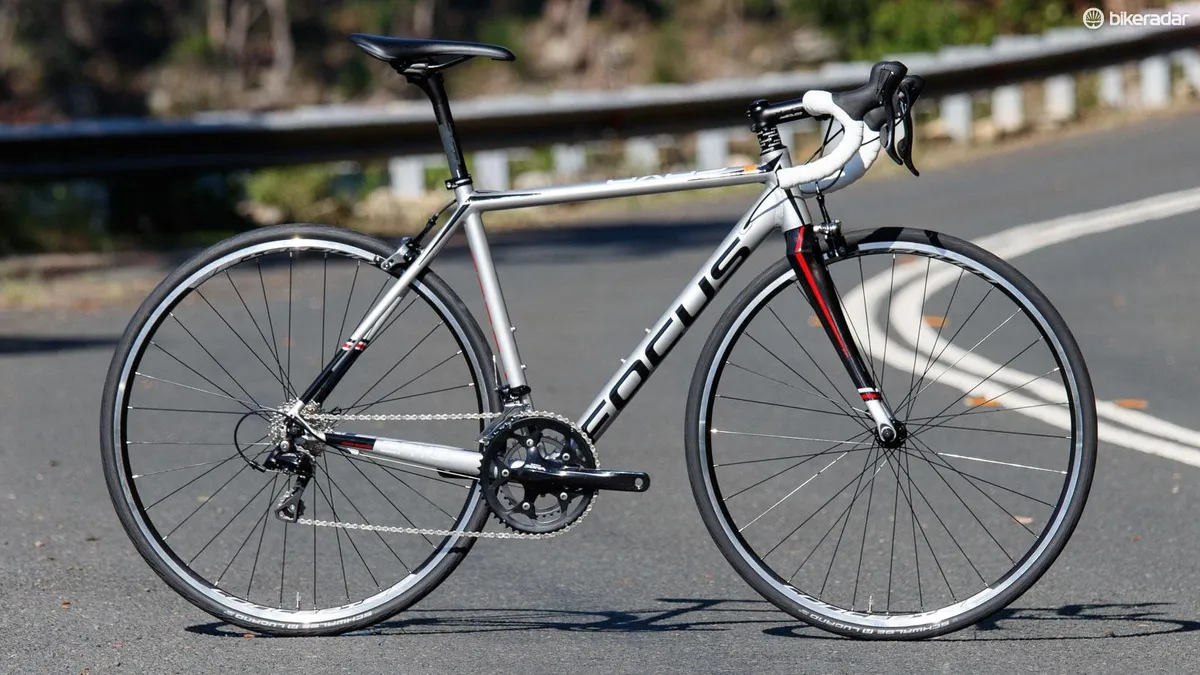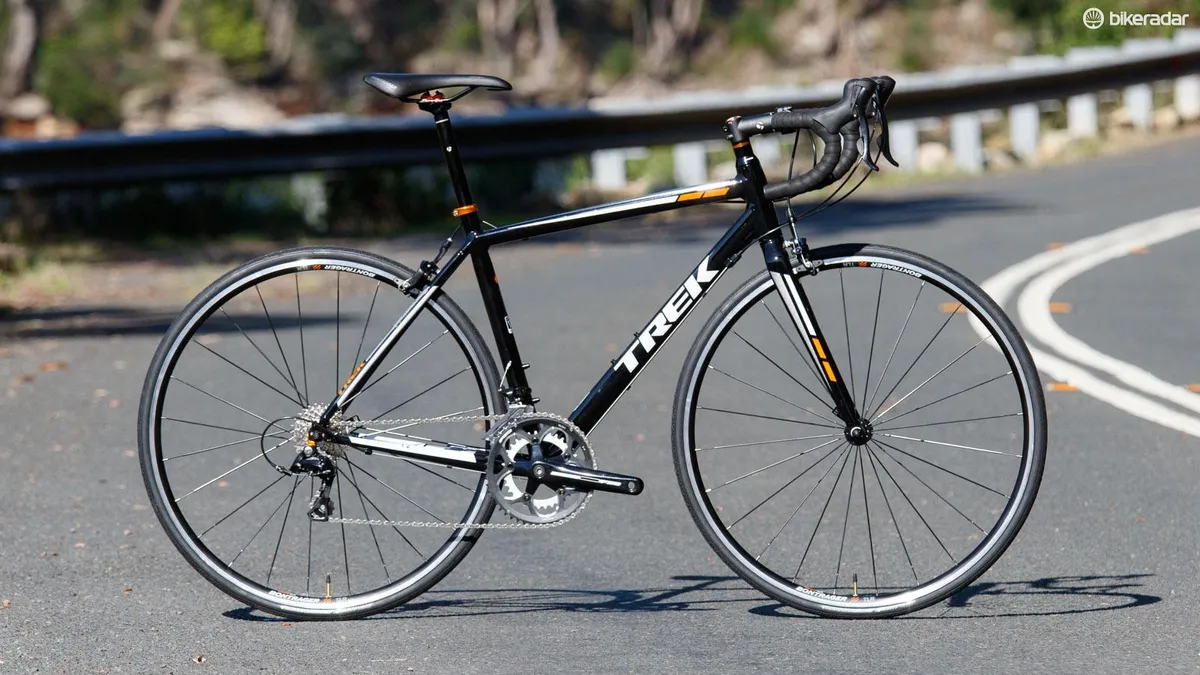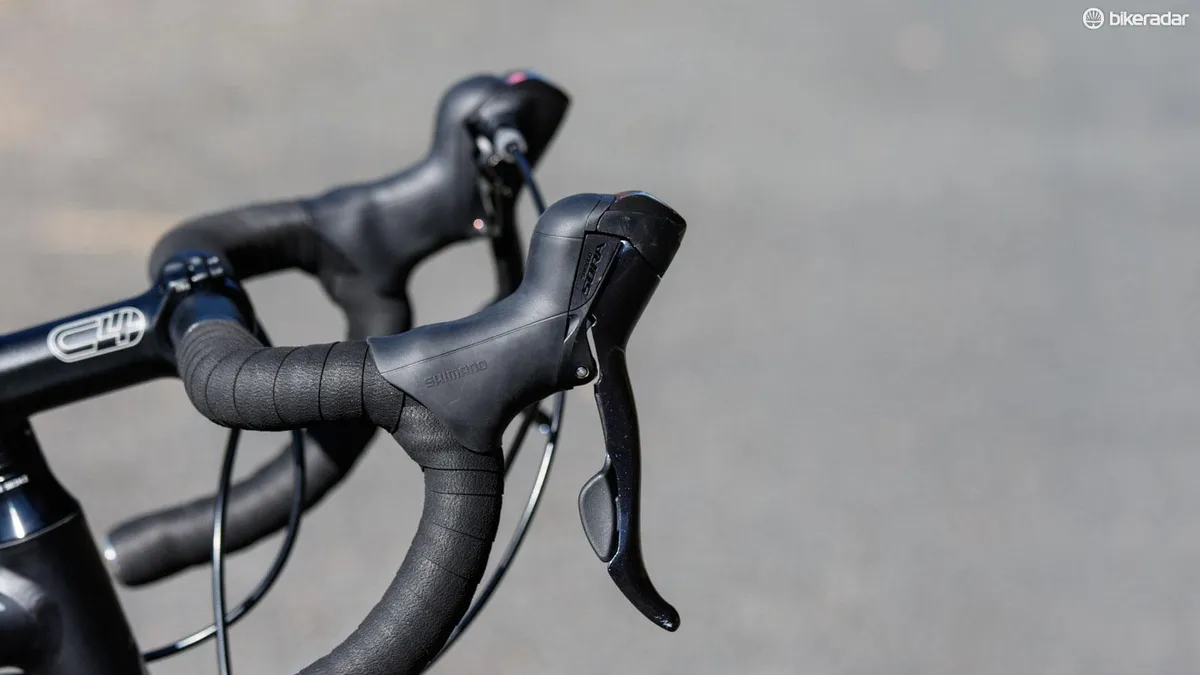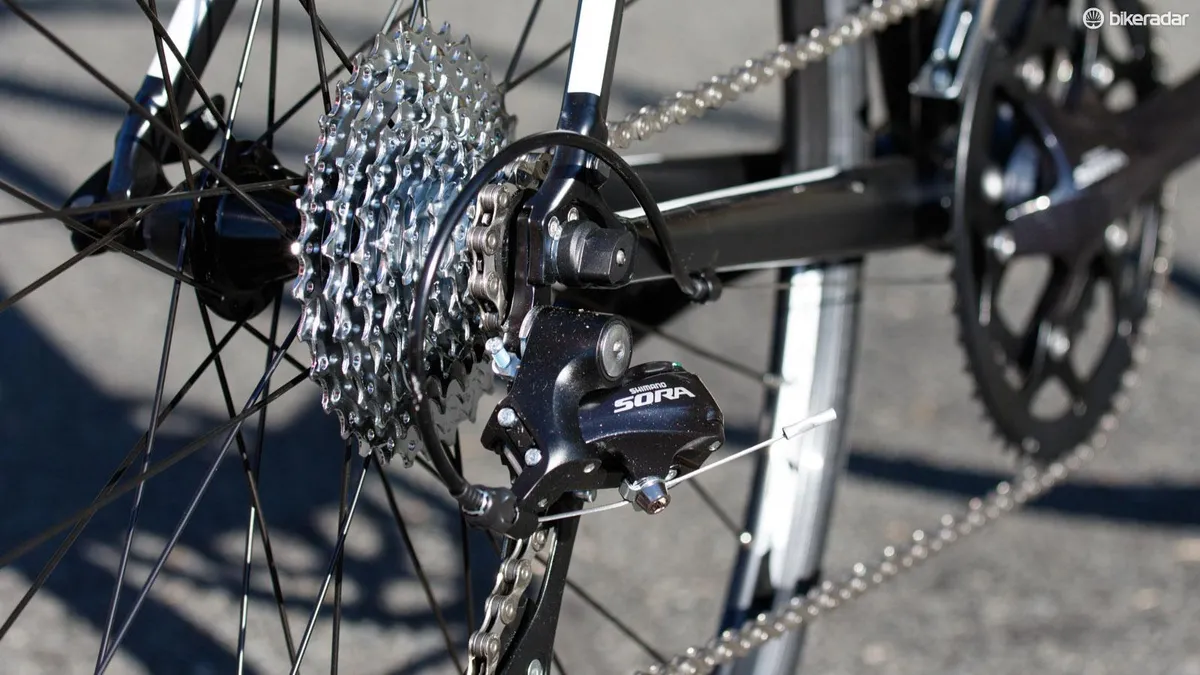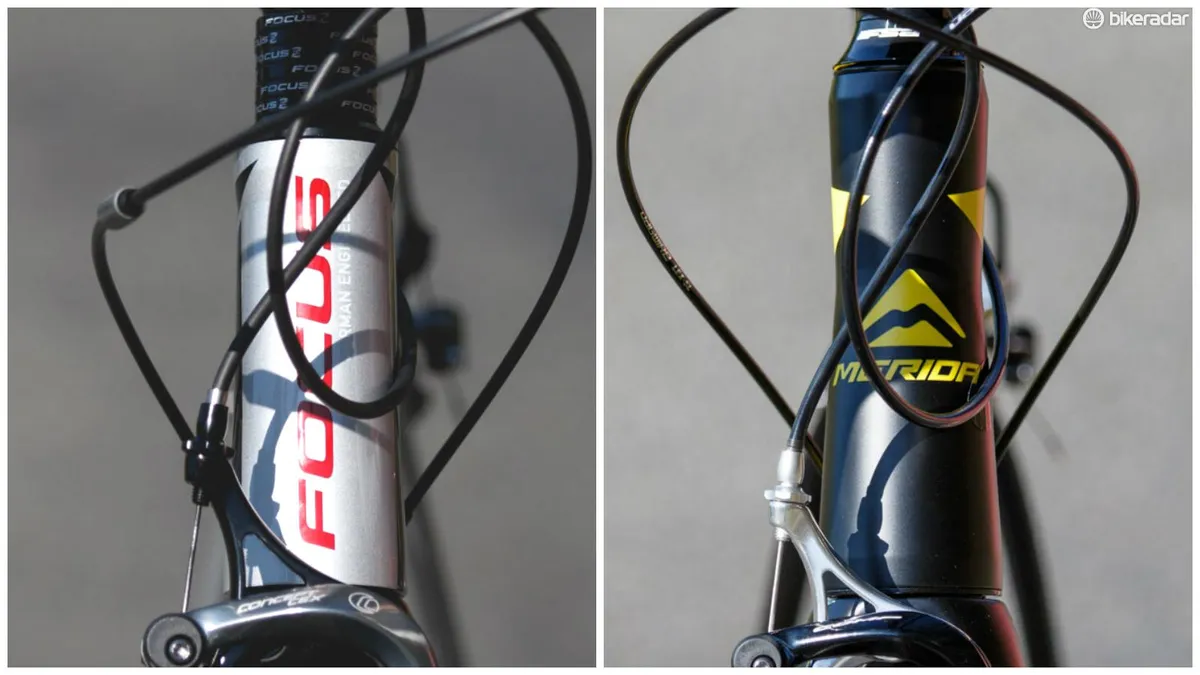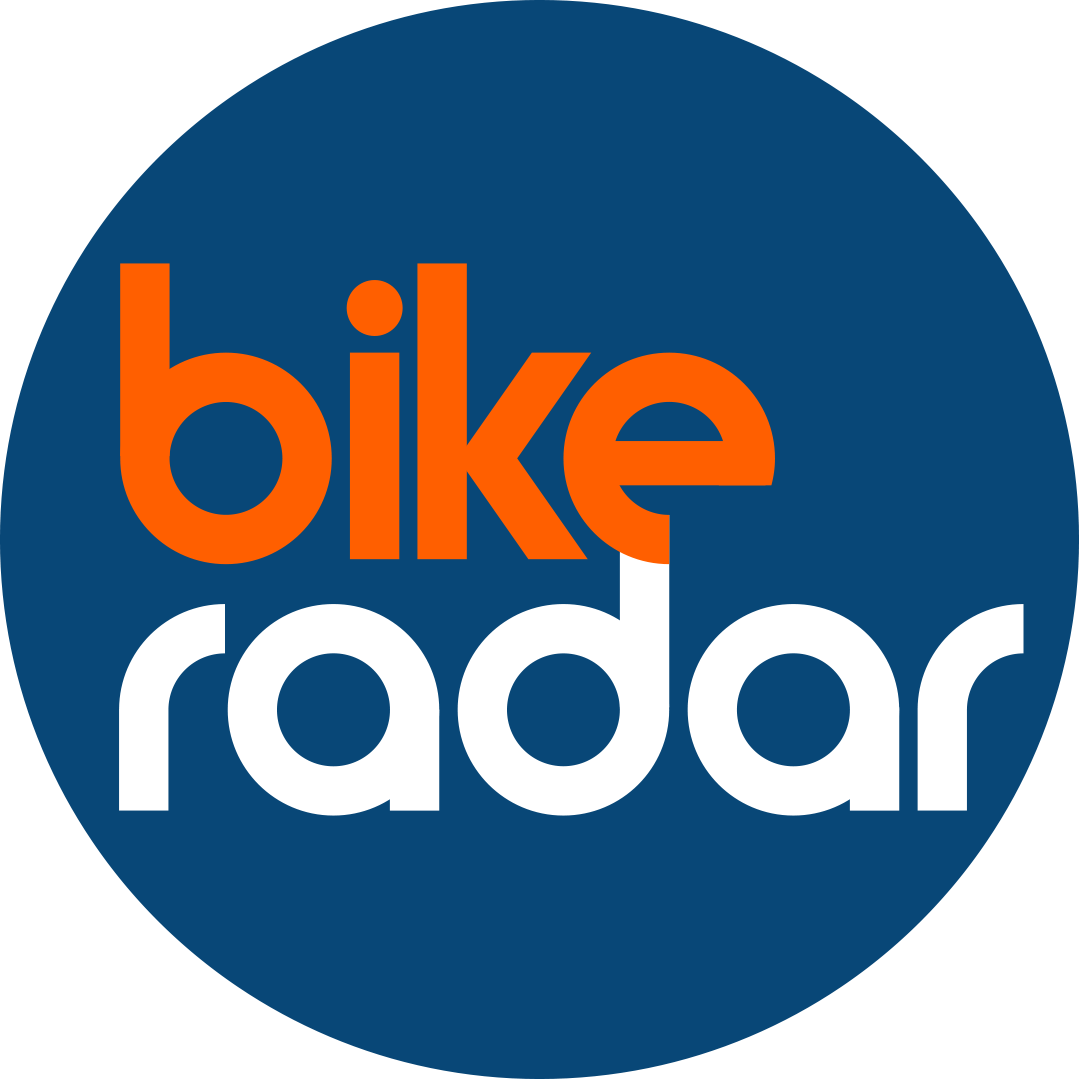If you’re looking for good advice on buying your first road bike, you’ve come to the right place.
We've tested six of the biggest-name road bikes for around $1,000 / £650 / AU$1,300: the Cannondale CAAD8 Sora 7, the Trek 1.2, the Merida Ride 200, the Giant Defy 3, the Focus Cayo Al Sora and the Specialized Allez E5 Sport.
To get a good feel for these machines, our four-rider Australian test team rode these bikes on a regular test track near Sydney’s Northern Beaches. With sharp pinches and sustained climbs, dead and bumpy road sections, twisting descents and scenic views, it’s a road bike-testing playground.
We get to grips with the highs and lows of each below. Given that these six are drawn from some of the biggest and most renowned global brands in cycling, it should come as no surprise that there are no truly bad choices to be had here.
Of the group, our testers felt the Specialized Allez E5 Sport rode particularly well – and made it our Editors' Choice for 2016. That said the Cannondale CAAD8 7 and Giant Defy 3 gave it a serious run for its money. Read on to find out why…
null
Take a look at our test here, and read in more detail below. We've also provided complete reviews of all the contenders – just follow the links.
What you should look for
Two of the biggest differences between the bikes – which will determine which one suits you best – lie in the geometry and gearing.
Slammed low, or upright and comfortable?
Some of the bikes we tested, such as the Focus Cayo, are more aggressive and racy, with a lower front end and a gearing range suited for flat, fast roads. Others, like the Giant Defy and Merida Ride, are more relaxed, with an upright position and gearing that can make molehills out of mountains.
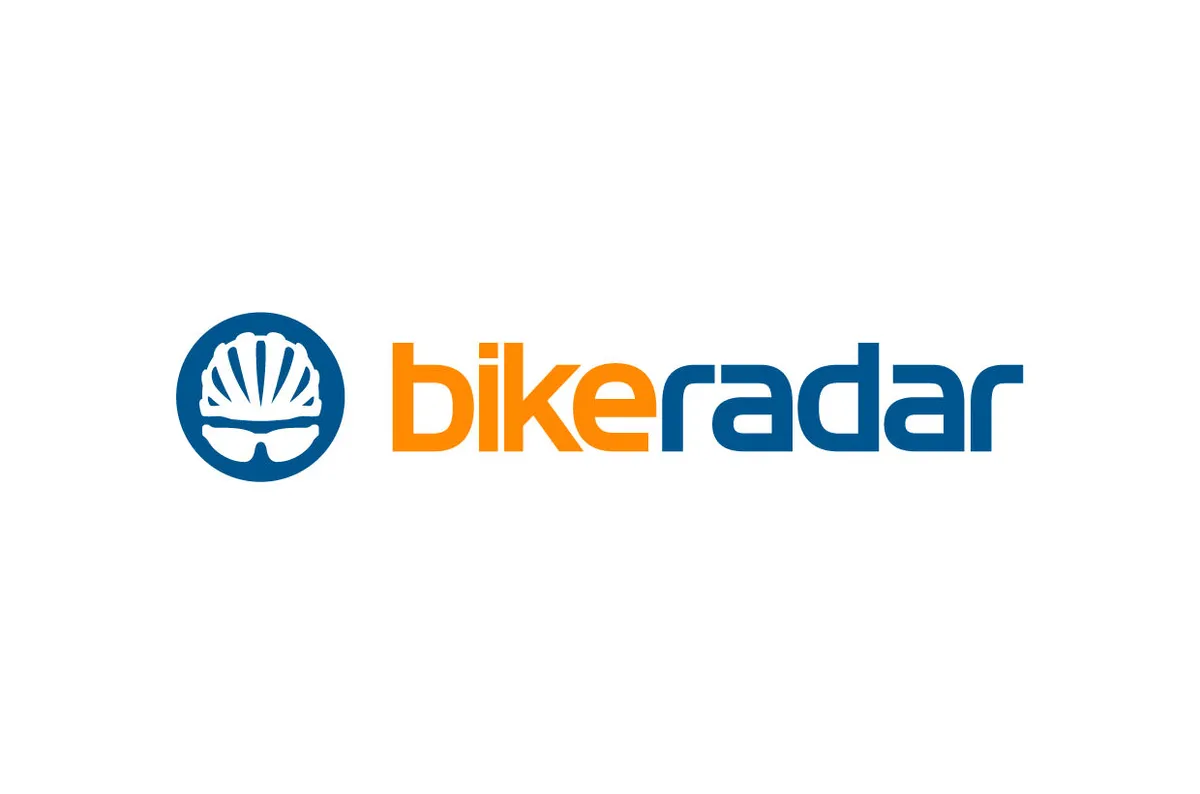
To call out the geometry and the gearing for each of the bikes below, we note the height of the head tube (the vertical frame tube at the front of the bike that helps determine handlebar height) and the cassette size (the range of gears on the back wheel).
At the price point, all the bikes feature alloy frames with carbon-fibre forks. But despite the shared materials, not all frames and forks are equal.
Both the Focus and Merida use forks borrowed from more expensive carbon bikes, and so feature a carbon tapered steerer tube for greater steering stiffness and lower weight. The other four bikes on test, meanwhile, each use carbon fork legs bonded to an alloy steerer tube that runs through the head tube of the frame.
Winching your way up the hills
All of the bikes tested feature ‘compact’ cranks, meaning that the chainrings are 50- and 34-teeth (t), instead of the traditional 53/39 or newer 52/36 medium. This means easier pedalling for you.
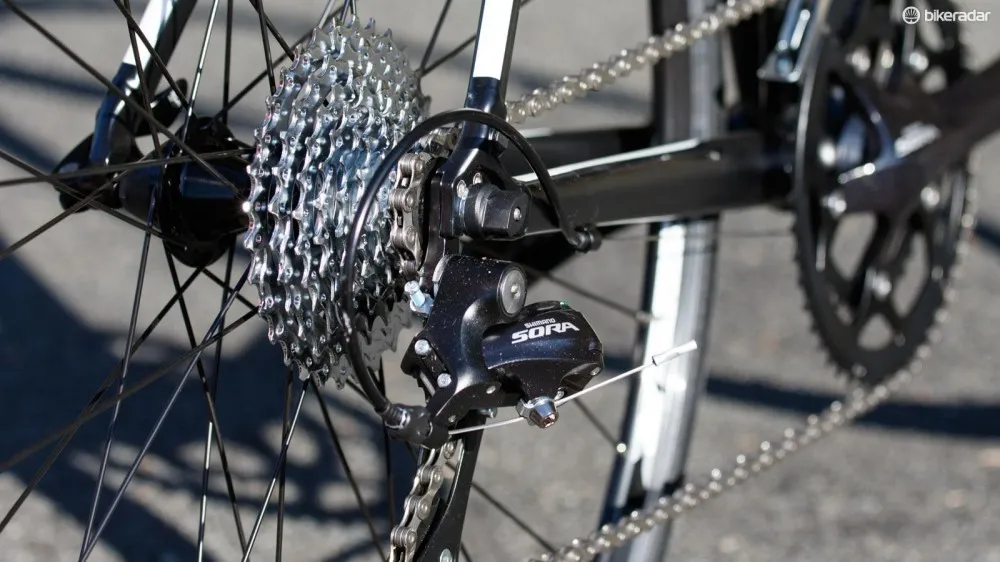
Where the bikes differ though is in their rear cassettes (the collection of different-sized sprockets the chain moves across). Here, we have bikes that feature 'big cog' sizes from 27t all the way through to mountain-bike sized 32t. The larger the cog, the easier it’ll be to make your way up the steep sections.
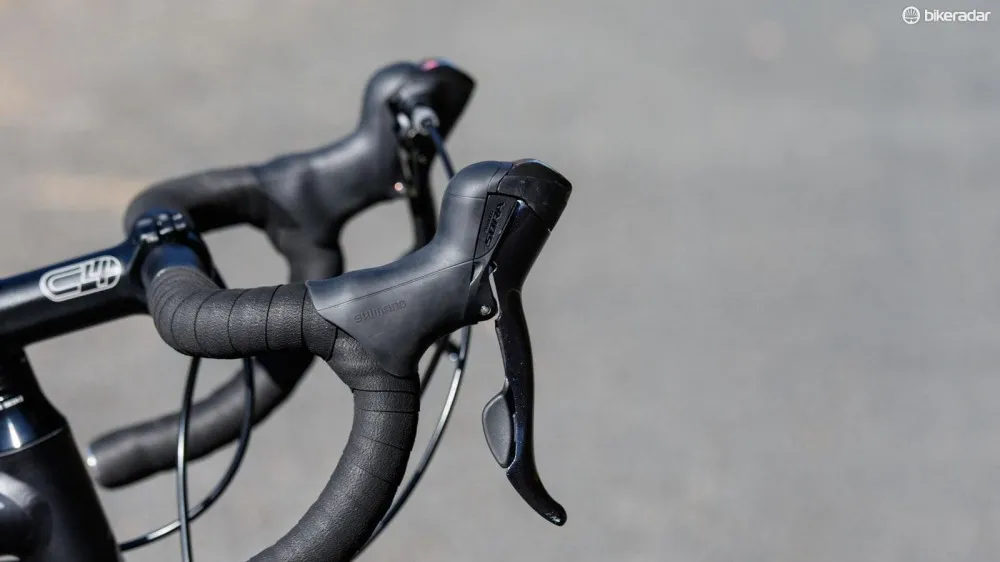
Nine-speed Shimano Sora drivetrains feature on all our test bikes. These downshift with a lever behind the brake lever and upshift with the brake lever. The system works well, sharing its shifting style with Shimano’s upper-tier groupsets, such as 105 and Ultegra.
The kit choices that matter
There are many factors affecting bike comfort, such as frame design, materials and seatpost diameter, but perhaps the most important is the choice of tyres. Here, the trend is for road bikes to have wider tyres than in the past. A 25c, or 25mm wide tyre is now near standard, and features on all bikes but the Trek. However, not every tyre brand measures the same way, and the width of the rim that the tyres sit on can make a noticeable difference too.
Perhaps the most surprising aspects of these bikes are the caliper rim brakes. All the bikes on test feature Tektro-branded, or rebranded brake calipers, yet there are noticeable differences in stopping power. Some of this can be attributed to different rims, but much of it falls to the chosen brake pads' compound – and even brake cable choice. These factors can mean the difference between secure and scary when it comes to stopping ability.
For riding comfort, a bike's contact points should not be ignored. It almost goes without saying that the saddle is crucial, but handlebar shape is something that's both more expensive and harder to change if not right.
If you’re planning to use your road bike for daily commuting or harsh-weather riding, then certainly consider rack and mudguard compatibility. While most carbon forks don’t play well here, the alloy frames do and so all bikes on test offer mounting for light pannier loads and clip-on mudguards.
All bike weights were taken without pedals. Some of the bikes include basic toe-clip style pedals, while others don’t include any pedals. Either way, we strongly recommend investing in a decent pair of cycling shoes and accompanying clipless pedals – the single biggest gear upgrade you can do to your road cycling.
Specialized Allez E5 Sport
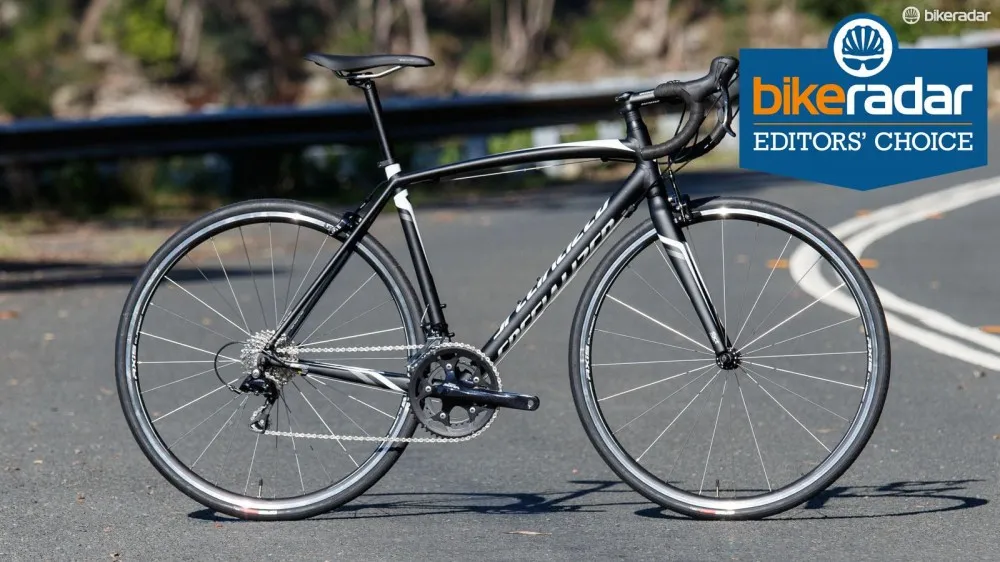
- Highs: Balanced geometry, ride comfort, contact points, solid brakes, wheels
- Lows: Heaviest on test, saddle has slight sharp edge beneath it
Winner of our Editors’ Choice award, it took something truly special to stand above the rest with so many similarities between all the bikes. In the Allez’s case, it was a combination of dialled geometry and flawless component choices that made for the most balanced, and joint-most comfortable bike on test. The frame offers attention to detail in the welds and tube shapes, but it’s the componentry that truly shone through for our testers.
Featuring the widest rims on test, there’s an enormous tyre volume to soak up the road, while a full Shimano Sora drivetrain shifts across a wide range cassette. The stiff brake calipers stop on a dime, while all the contact points were equally comforting.
Perhaps the only negative is the weight, although at just 300g more than the lightest going, it’s hardly a noticeable issue.
- Price: $970 / £750 / AU$1,399
- Weight: 9.41kg (20.75lb)
- Frame size tested: 54cm (effective top tube: 549mm)
- Head tube: 144mm
- Gearing: 11-32
- Tyre width: 28.2mm (25c claimed)
- Outer rim width: 24.5mm
Read the full review of the 2016 Specialized Allez E5 Sport.
Cannondale CAAD8 Sora 7
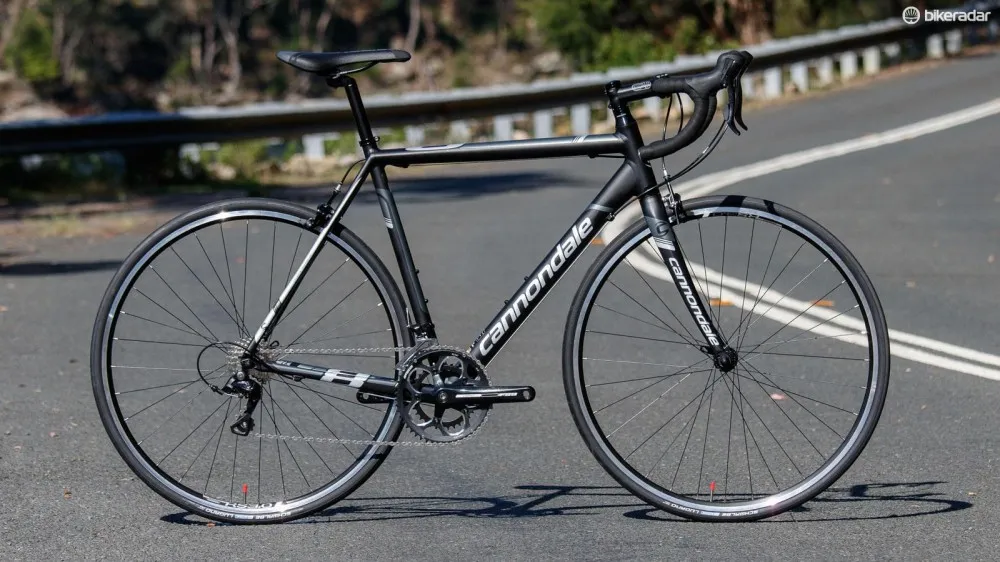
- Highs: Proven CAAD frame, sorted geometry, prestige image
- Lows: Brakes, narrower gearing range, price
When it comes to alloy road bikes, there are few more iconic than the CAAD series from Cannondale. Refined for well over a decade, the CAAD8 rides with a familiar attitude that we continue to love of the American brand’s road bikes.
Its geometry is well dialled and provides for pinpoint accuracy on sketchy descents – although it is more upright than CAAD bikes of past. The ride comfort is enough to ease off the worst vibrations, though the Specialized and Giant are marginally smoother. But put the power down, and the racing heritage of these bikes shines through with rewarding acceleration.
However, such a frame means component compromises, and the build falls on the more basic side given its price. That said, the stock FSA crank works well enough, although it’s a little more sluggish to shift than a Shimano Sora unit. The narrow 12-27t cassette is more limiting than other bikes' though, and the brakes are average at best.
Despite these component issues, the CAAD demonstrates that the frame really is the heart and soul of a good bicycle.
- Price: $1030 / £700 / AU$1,299
- Weight: 9.24kg (20.37lb)
- Frame size tested: 54cm (effective top tube: 545mm)
- Head tube: 154mm
- Gearing: 12-27
- Tyre width: 25.5mm (25c claimed)
- Outer rim width: 21.45mm
Read the full review of the 2016 Cannondale CAAD8 Sora 7.
Giant Defy 3
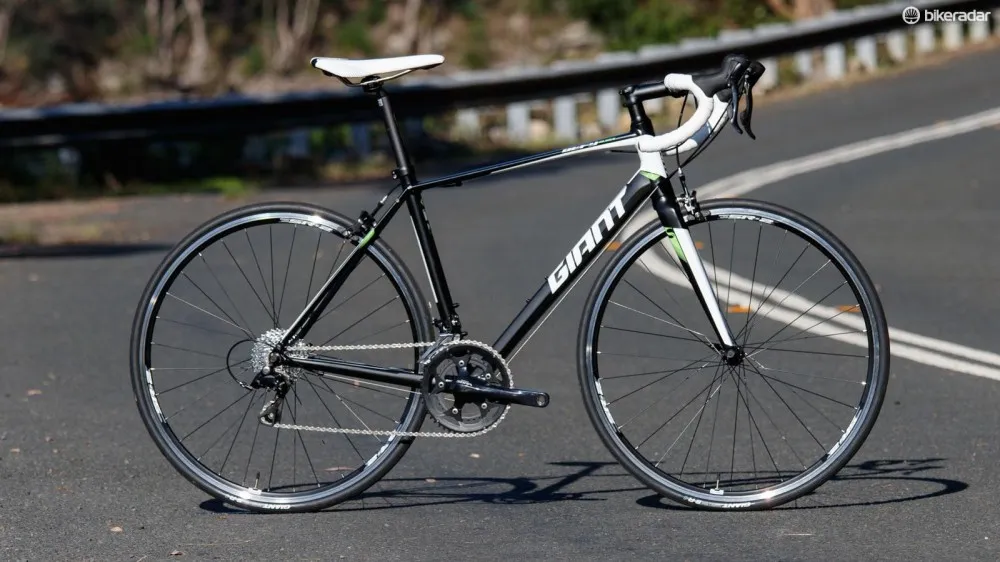
- Highs: Progressive frame design, ride comfort, full Sora drivetrain, padded contact points, price
- Lows: Narrower rims, weak brakes, blocky aesthetics
The Defy ran the Specialized Allez close for the title of most comfortable bike on test. The geometry is proven and places you into a stable yet efficient pedalling position for long rides. If it had wider, tyre-plumping rims, the Defy would have pipped the Allez to the post.
Giant shows its strength as the world’s largest bicycle manufacturer and manipulates the Defy’s tubes into shapes that would have been thought impossible just a few years ago. The frame is stiff under power, though others on test offer more forward snap.
The drivetrain meanwhile is equal to that of the Specialized, but the brakes aren’t quite as effective.
- Price: $920 / £649 / AU$1,099
- Weight: 9.32kg (20.55lb)
- Frame size tested: Medium (effective top tube: 545mm)
- Head tube: 164mm
- Gearing: 11-32
- Tyre width: 25.2mm (25c claimed)
- Outer rim width: 19.90mm
Read the full review of the 2016 Giant Defy 3.
Merida Ride 200
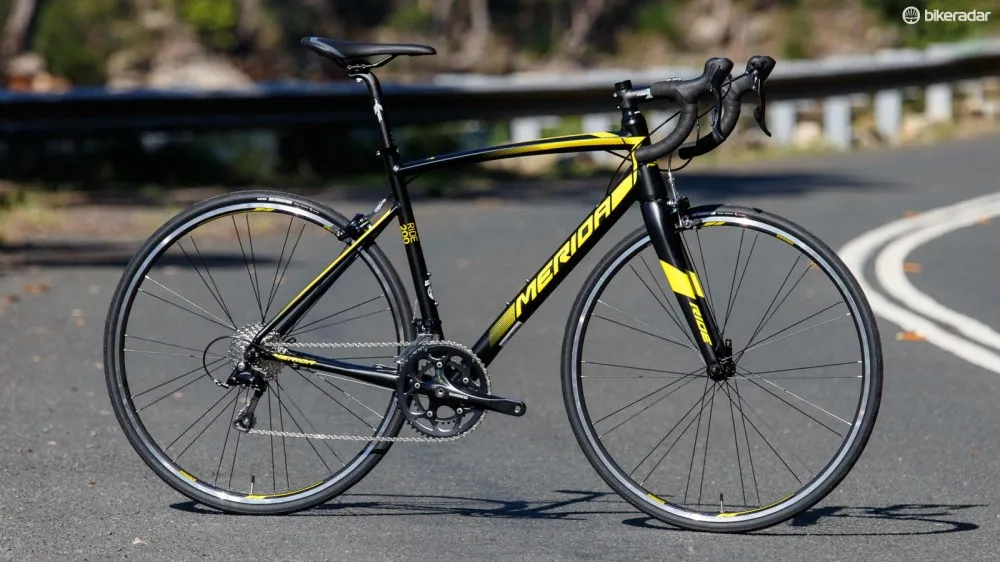
- Highs: Comfortable ride, full carbon fork, premium frame quality
- Lows: Slow front shifting, brakes, perhaps too upright ride
The Merida Ride offers by far the most upright ride position on test, and is well suited to riders seeking a comfortably relaxed riding position. This meant though that we struggled to get power to the pedals in the same way we could with other bikes on test.
Not everyone seeks absolute speed though, and the Merida cruises smoothly over inconsistent surfaces, being only overwhelmed by larger bumps and holes.
After the Giant, this frame is the most detailed and cleanly finished on test. This isn’t surprising, as Merida is the second largest bicycle manufacturer in the world and such production power is how premium features like the internal cable routing and full carbon fork with tapered steerer tube are provided.
Component-wise, the Merida lags slightly behind. The rims are the narrowest on test, and that, along with their different spoke pattern, means they are likely to be less durable too. The wide range gearing is great, although the budget non-series Shimano crank is the slowest shifting out of the six bikes.
- Price: $N/A / £N/A / AU$1,249
- Weight: 9.31kg (20.53lb)
- Frame size tested: 52cm (effective top tube: 540mm)
- Head tube: 169mm
- Gearing: 11-32
- Tyre width: 25mm (25c claimed)
- Outer rim width: 18.90mm
Read the full review of the 2016 Merida Ride 200.
Note: Merida is not sold in the United States and sadly this particular model is not available in the UK either. For those in the UK, the Ride 100 and 300 share the same frame.
Focus Cayo Al Sora

- Highs: Quality frame, full carbon fork, component choices, fast ride
- Lows: Ride rattles in both comfort and sound, brakes, saddle needs to go
Much like the Merida, the German-designed Focus offers an incredibly premium frame and fork package with features unexpected at the price. Such examples are the full-carbon tapered fork and internal cable routing, but less obvious details include a triple-butted frame construction and machined bottom bracket shell – something that certainly helps this to be the lightest bike on test.
The Cayo is a bit more classically 'European' in its approach than some of its peers – its geometry is lower and more aggressive than most. For riders with speed aspirations, this will be well received, but if you're seeking absolute comfort and control you may be happier elsewhere.
The ride quality proved one of the harsher on test, and this is mostly down to the tube shapes, which ward off any signs of flex under hard sprints. In terms of componentry, the drivetrain is equal to the Specialized, and the wheels are pretty good too. Like far too many of the others on test though, the brakes are weak and the saddle certainly needs to go. Annoyingly the frame also resonated with a loud rattle, caused by the rear brake cable running loosely through it.
- Price: $TBC / £599 / AU$1,299
- Weight: 9.12kg (20.11lb)
- Frame size tested: Small (effective top tube: 537mm)
- Head tube: 128mm
- Gearing: 11-28
- Tyre width: 26.5mm (25c claimed)
- Outer rim width: 21.7mm
Read the full review of the 2016 Focus Cayo Al Sora.
Trek 1.2
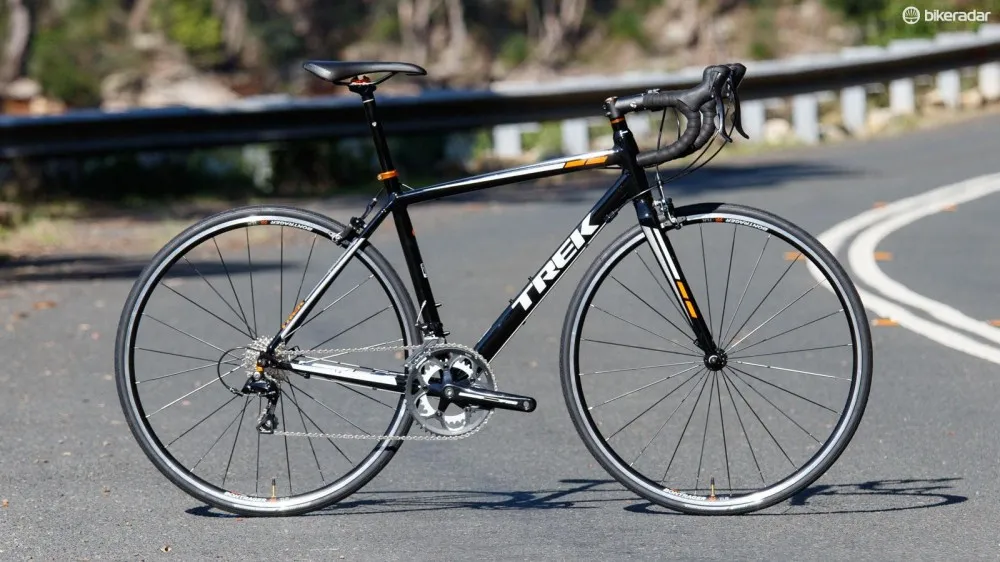
- Highs: Proven frame geometry with balanced handling and position, quality wheels, saddle
- Lows: Tyres, brakes, tight handlebar bend, and did we mention tyres?
We so commonly expect the finest from Trek, but were disappointed by what the 1.2 offered to its direct competitors. The bike is good and we still enjoyed our time testing it, but that’s not enough when some of the competition is great.
Its geometry is refined and it took no time to feel comfortable in the position, especially given the quality touch points. However, while our body weight was up to hard cornering, the tyres weren’t. A hard compound, mixed with the only 23c width on test left this bike at an obvious disadvantage to the others on test. The tyres were again a let down when it came to rough surfaces, with the Trek offering a little too much feedback for our liking.
Changing out tyres isn’t hard, but a good set could add another 10% cost to the bike, which may lead you to look elsewhere. That said, the wheels feature a quality rim that can be upgraded to tubeless at a later point too.
The drivetrain does as it should, although the Specialized and Giant prove that a wider-range cassette is a good thing for hilly rides. And speaking of hilly rides, we found the 1.2’s brakes to be the equal-worst on test.
- Price: $930 / £650 / AU$1,299
- Weight: 9.25kg(20.39lb)
- Frame size tested: 52cm (effective top tube: 534mm)
- Head tube: 139mm
- Gearing: 11-28
- Tyre width: 24.2mm (23c claimed)
- Outer rim width: 23.00mm
Read the full review of the 2016 Trek 1.2.
Special thanks to Cyclogy Gear for the paid gear product placement within this video.
